DELPHI (Day 2 - part 2)
Next to the temple was the amphitheater.
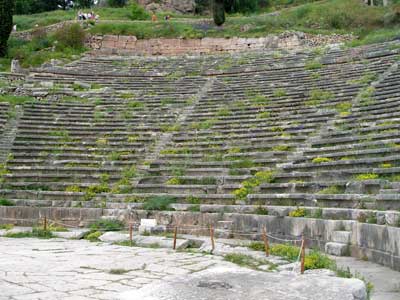
Built in the 4th century BC, it was remodeled 200 years later by the Romans. The 35 terraces could seat 5,000 spectators who came to watch, among other things, plays of Apollo slaying Python.


The stadium, which could hold 6,500 people, was the site of the Pythian Games. The track is about 550 feet long.
There were four separate Panhellenic games held in ancient Greece: the Olympic Games (held in Olympia every 4 years in honor of Zeus), the Pythian Games (in Delphi every 4 years in honor of Apollo), the Nemean Games (in Corinthia for Zeus and Heracles every 2 years) and the Isthmian Games (in Isthmia for Poseidon every 2 years).
The Pythian Games started in 582 BC. Originally they were competitions for art, dance, poetry and music (singing and instrumental). Eventually athletic events (foot races, gymnastics, chariot racing, wrestling, boxing, long jump, javelin and discus throwing, etc) were also added. The winners received a wreath of bay laurel, sacred to Apollo,
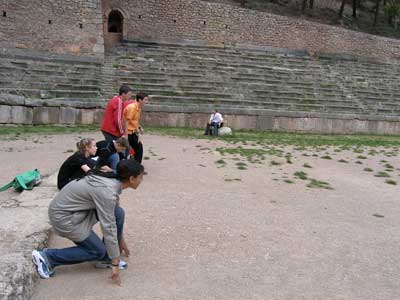
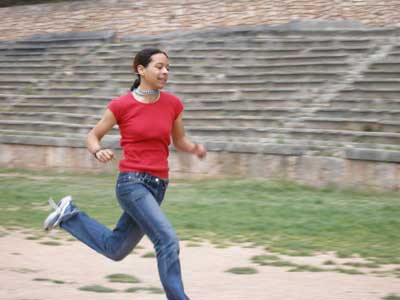
Some kids line up to race... and the girl wins!
In the ancient games, women would not have been allowed compete in the athletic events, although they were likely included in the musical and poetic contests. To ensure this, all events except for the chariot race were performed naked. Participants also had to be Greek (no non-Greeks allowed) and probably had to be fairly wealthy in order to pay for training, transportation, lodging and other expenses.
We then retraced our steps back down.

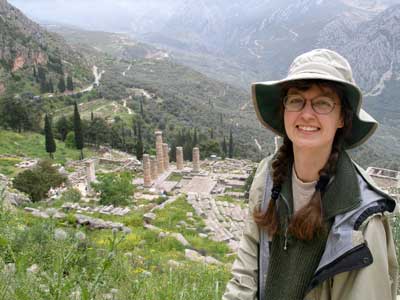
A view of the amphitheater and the Temple of Apollo

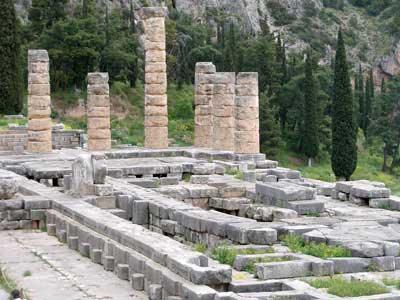
The Temple of Apollo
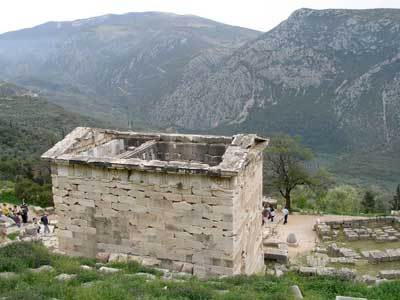
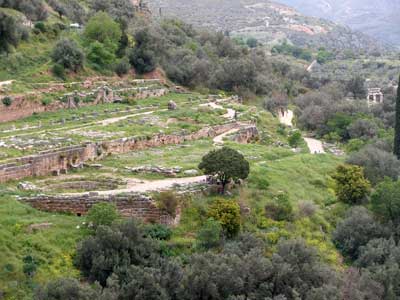
The Athenian Treasury... and a distant view of ancient Gymnasium and the Sanctuary of Athena Pronaia
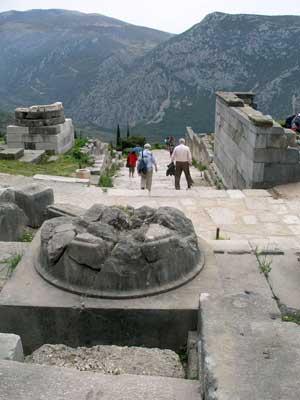
The start of the Sacred Way
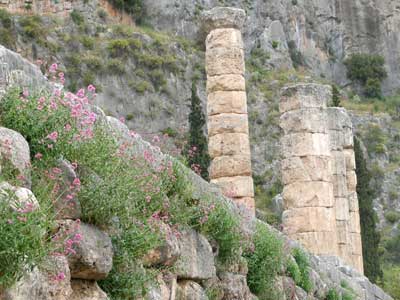
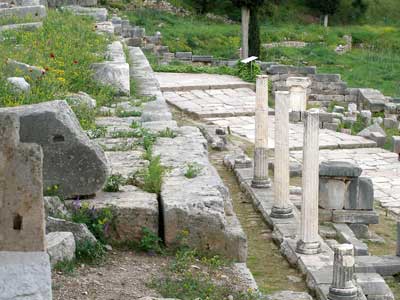
Temple columns... and the Stoa of the Athenians along the Sacred Way
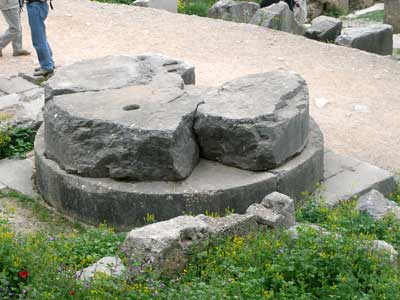
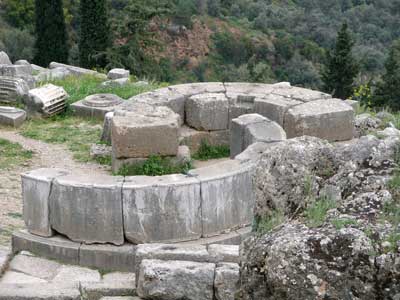
Old statue bases and altars. Before Apollo became prominent here, there were mostly female deity statues.

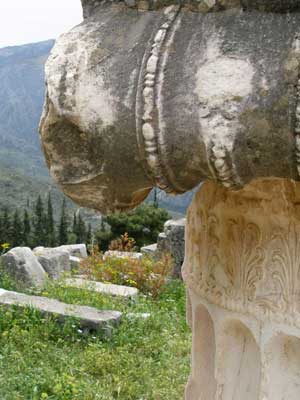
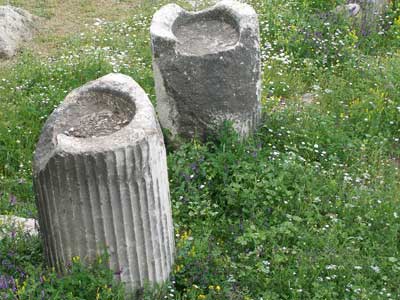
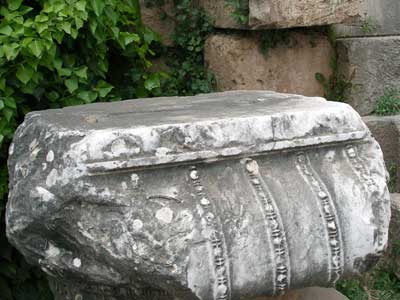
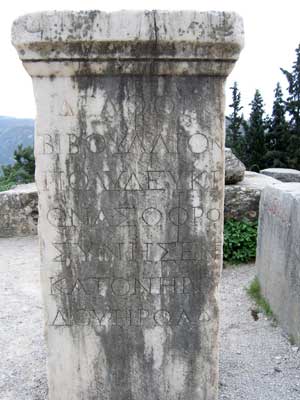
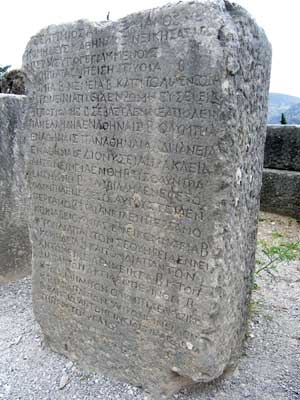
The wisdom of sages was inscribed throughout the temple. Many of the phrases we still know today, such as "Know thyself" and "Nothing in excess."
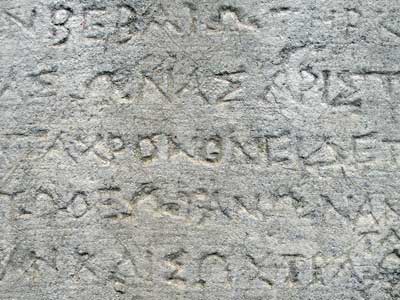
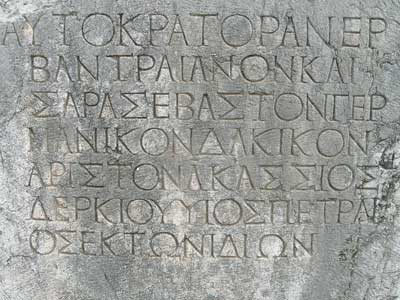
Eh, it's all Greek to me.
Our tour bus transferred us to another bus which continued to take us 145 miles up towards Meteora.
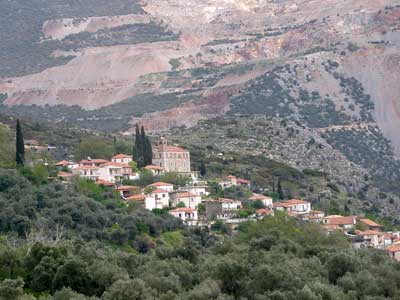
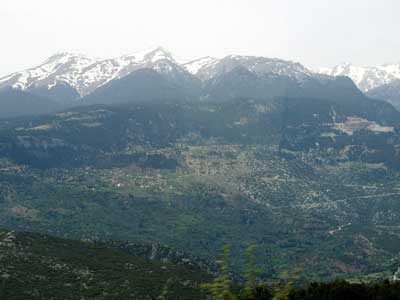
The mountain village of Eleonas (meaning olive grove)... and the surrounding mountains

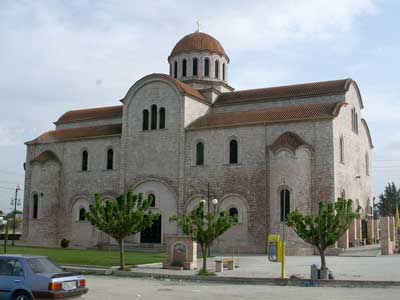
A church in Gravia... and in Trikala
We arrived at the Amalia Hotel located outside the town of Kalambaka... originally called Kalabaka from the Turkish for "powerful fortress." The hotel was very charming, designed to look like old convent. We were served a wonderful (albeit salty) dinner, complete with cake sitting in a pool of honey.

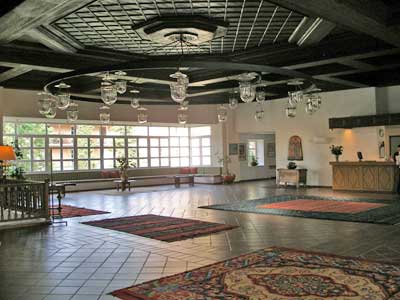
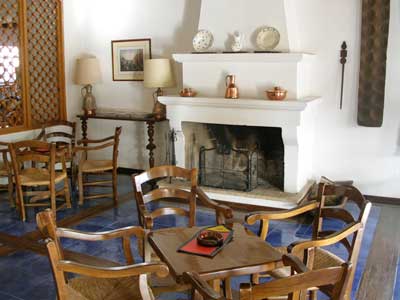
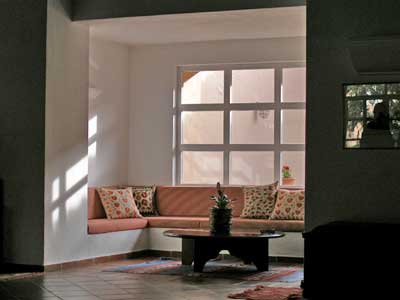
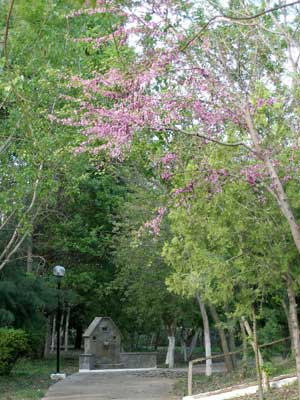
The Judas Tree conveniently blooms in late spring.
return • continue

